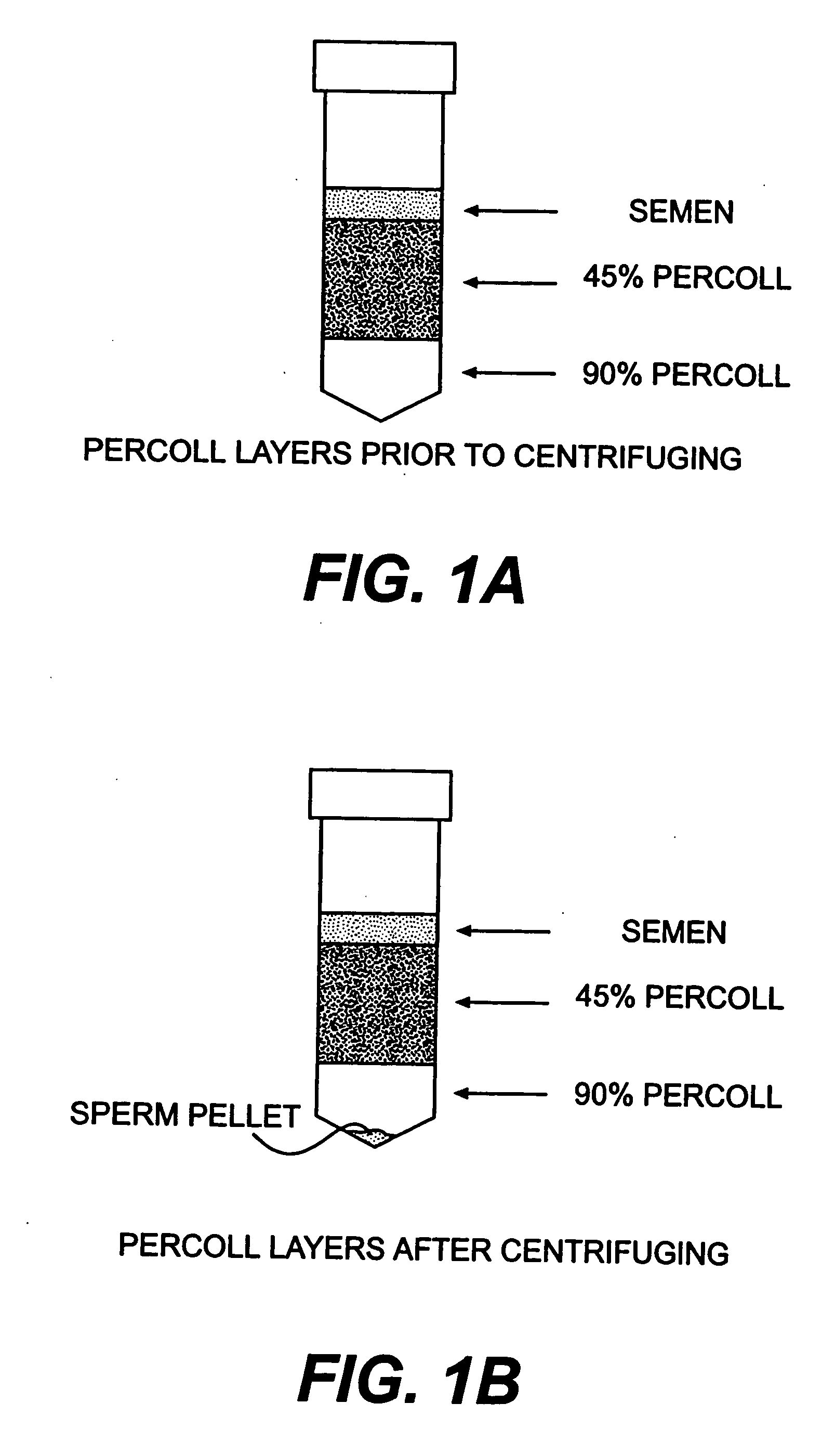Method for generating cloned animals using chromosome shuffling
a technology of chromosome shuffling and clone, which is applied in the field of generating cloned animals using chromosome shuffling, can solve the problems of undesirable recessive traits in the progeny, and achieve the effects of eliminating chromosomal abnormalities, uniform population, and improving quality control in xenotransplantation
- Summary
- Abstract
- Description
- Claims
- Application Information
AI Technical Summary
Benefits of technology
Problems solved by technology
Method used
Image
Examples
Embodiment Construction
[0123] Isolation of Somatic Cells from Semen
[0124] The cloning of animals by nuclear transfer has many applications in such diverse fields as agriculture, medicine and the preservation of endangered species. One difficulty commonly faced, however, is an adequate source of somatic cells. In the case of agricultural species such as cattle, highly-valued studs are often lost with no known preservation of the genome for cloning. This invention describes a technique to isolate viable somatic cells from semen, urine, milk and other sources where the isolation of somatic cells is problematic.
[0125] While semen is often thought of as being largely a solution of spermatozoa that are haploid, somatic diploid cells may occasionally be shed as well. We centrifuged 0.75 ml of bovine semen at 700.times. g (45%-90% percoll gradient for 30 minutes), aspirated the supernatant, and resuspended the pellet of 500 ml in DMEM medium with 15 FCS. The resulting cell suspension was then plated in 35 mm.sup....
PUM
| Property | Measurement | Unit |
|---|---|---|
| tip radius | aaaaa | aaaaa |
| osmolarity | aaaaa | aaaaa |
| length | aaaaa | aaaaa |
Abstract
Description
Claims
Application Information
 Login to View More
Login to View More - R&D
- Intellectual Property
- Life Sciences
- Materials
- Tech Scout
- Unparalleled Data Quality
- Higher Quality Content
- 60% Fewer Hallucinations
Browse by: Latest US Patents, China's latest patents, Technical Efficacy Thesaurus, Application Domain, Technology Topic, Popular Technical Reports.
© 2025 PatSnap. All rights reserved.Legal|Privacy policy|Modern Slavery Act Transparency Statement|Sitemap|About US| Contact US: help@patsnap.com

